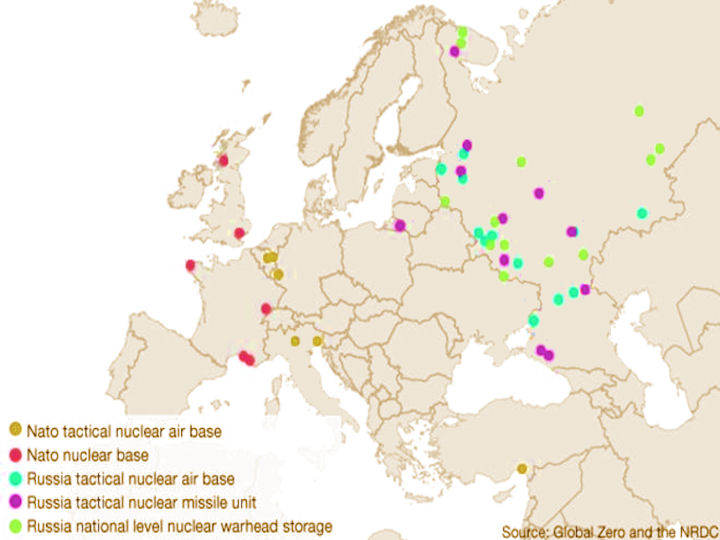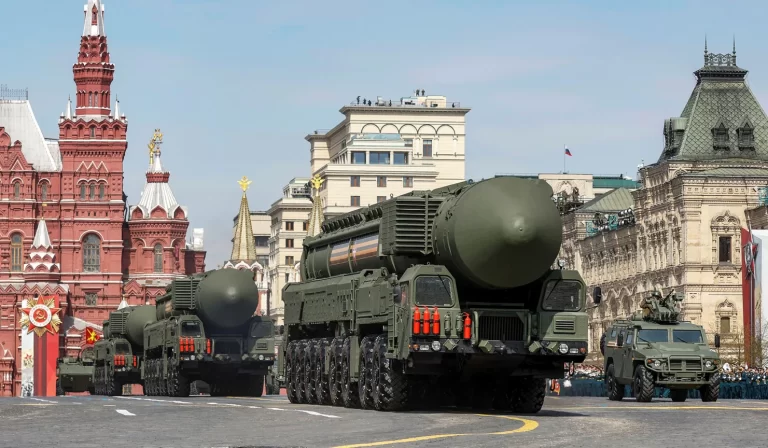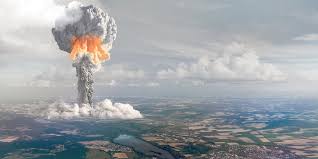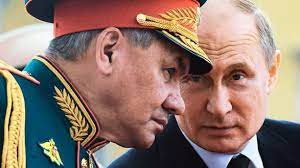There are well-grounded doubts as to whether Russia has got a combat-ready nuclear arsenal. There’s a good chance it makes the Kremlin speculate on nuclear blackmail, with threats to launch nuclear strikes on NATO and its allies.
With NATO’s Steadfast Noon nuclear deterrent exercise over, as they started on October 17, Moscow announced plans to conduct its Thunder exercise.
And while this exercise usually takes place following NATO exercises, much more attention is focused on it this time.
The 1963 treaty bans nuclear tests in the atmosphere, space and under water, and the Soviet Union, and then Russia, have observed the terms. The latest nuclear tests took place with the Soviet collapse approaching in 1990. Eight warheads, with a total yield of 70 kilotons, were exploded underground at the Novaya Zemlya test site, “Object-700”.
Russia occasionally announces verifying the readiness of intercontinental ballistic missiles, as their service life has long exceeded all laid standards, in some cases.
With up to 46 missiles available, R-36M2 Satan can deliver more than 30% of all Russian nuclear warheads. Their production ended with the Soviet collapse, and their maximum life ended in 2005, though it was “extended” then, saying the missiles were allegedly fit for use up to 2020.
The oldest missile was shot off to test the real readiness, and if it fulfilled its mission, the operating life continued. If not, another one was launched and so on, until the task was completed.
But these missiles are relatively new if to compare to the UR-100N (RS-18), with up to 20-24 missiles still in silos, as the latter of which was produced before 1985.
The readiness of Topol ballistic missile also raises questions. It was put into service in the 80s, then upgraded to Topol-M in mid-90s. 18 Soviet Topols are still in service, and 78 Russian Topol-Ms were produced before 2011. The rest of the ground-based nuclear triad is based on 170 SS-27 (Yars), an updated version of the Soviet Topol, put into service in 2009.
Of all ground-based systems, 88 missiles were produced more than 30 years ago, 78 missiles – nearly 20 years ago, making up almost 50% of the entire arsenal, with similar question on submarine-launched ballistic missiles.
But the most doubtful is condition of Russian nuclear munition. That is why the Kremlin is eager to make underground nuclear tests. This munition has its own storage life, much shorter than conventional weapon. With the storage period expired, the charge capacity is rapidly falling.
The munition requires maintenance, such as replacing consumables, neutron fuses, for example. These fuses consist of elements that lose their radioactivity with time. Chemical and physical properties of other nuclear weapon components also change.
Things are complicated by highly corrupted 12th Main Directorate of Russian Defense Ministry, and multiple process failures while constructing warhead storages, including Gadzhiyevo (Russian Northern Fleet and nuclear submarines base), Olenegorsk, and Severomorsk. Funds for nuclear arsenal maintenance were stolen.
The hypothesis about most Russian nuclear arsenal unfit for action might be confirmed by the fact that nuclear tests scheduled for October 7 and 12 this year, initiated by Russian President Vladimir Putin, were canceled. Data that require additional evidence suggest there were 5 more attempts to test nuclear weapons from October 14-20. There were just two tests, with negative result, though. There was an attempt of underground nuclear test in the Irkutsk region on October 14, with no expected outcome.

Underground tests scheduled for October 17-18 were canceled for “technical issues”. Underwater tests in the Barents Sea on October 20 were canceled as well.
Secret new nuclear weapon tests (presumably a product of the Poseidon project) scheduled for October 20 in the Gulf of Finland turned out to be a fiction.
It turns out that Russia’s speculating on dirty bomb today is the only reliable and successful way. The poor state of Russian nuclear arsenal has obviously triggered threats to use those weapons in Ukrainian theater of war. Just 41% of Russia’s nuclear arsenal is theoretically ready to be used immediately. 1,500 nuclear warheads, out of 6,000, have far exceeded normal service life and are subject to disposal. Russia had 336 intercontinental ballistic missiles with nuclear warheads at the end of 2021, most of which had served their standard life.
Guaranteed 20-years of safe operation for Topol, UR-100N UTTKh and R-36M2 Satan were over in 2021-2022. The long-term plans by Russian military suggested those missiles had to be gradually phased out, with not more than 5% of them remaining in service by 2020. The missiles’ life had been extended by a factory in Ukraine, which stopped that work after 2014.
Of 12 nuclear storages, 5 are located directly either near Moscow or at Russian border (the village of Mozhaisk in the Moscow Region and Belgorod). The remaining 7 storages are located not far from the Urals, or in the Far East.
It is unclear whether Russia has still got nuclear bombs for tactical aircraft and atomic shells for 152 mm and 203 mm artillery. That special munition was probably transferred for storage in early 2000s, when the emphasis was on mobile delivery systems, and depleted its resource then. Soviet and then Russian leaders committed themselves to destroy all nuclear artillery, nuclear warheads of tactical missiles, nuclear anti-personnel mines, and to remove tactical nukes from ships, multi-purpose submarines and naval aviation. These nukes and nuclear warheads of SAMs were to be placed in a central storage, with some of them destroyed.
NATO headquarters claims that by 2010, Russia had concentrated its tactical nuclear weapons at “central storage facilities” in Russia; removed tactical nukes from its ground forces; reduced tactical nuclear arsenal by 75% cutting non-strategic nuclear weapons. Russian storages today, however, contain 1,500-2,000 nukes.
Possibility for Russia to use nuclear weapons in the near future is grossly exaggerated, it seems.
To complicate matters further, there is a question how to protect Moscow in case of a responsive nuclear strike.
The missile defense system of Moscow consists of 68 silos for launching 53T6 A-135 Amur system missiles that was put on combat duty back in the 1970s. Those 53T6 “anti-missiles” had completely depleted their resource in early 2010s, with control testing in Kazakhstan needed to keep them on alert.
The A-235 Nudol system was designed to update Moscow missile defense system, with testing in fall of 2021. But Russia is unable to mass-produce this system and guarantee its effectiveness.
The task to extend the life of launchers was given to Russian JSC Makeyev Design Bureau, the main designer of submarine launched ballistic missiles that has not got enough experience or qualified experts, which puts their combat capability into question.
The role of Strategic Missile Forces in Russia’s overall nuclear capacity has decreased from 70% to nearly 35% already in 2020-2021.
It would be enough to strike four critical targets: Gadzhiyevo in the Murmansk region, Vilyuchinsk in Kamchatka, an airfield near the city of Engelsk in the Saratov region, and a bomber base in the Amur region, to neutralize 80% ofRussian nuclear capacity. The remaining mobile systems (Topol and Yars) are believed to be a target for high-precision weapons. Meanwhile, probability of any damage to the United States and its allies during the preemptive strike by Russia is almost zero, as it is said.
Russia has lacked practical experience in handling nuclear weapons from 1991. This adds to the possibility of human error, mishandling while delivering, loading, or firing.
The tactical nuclear strike algorithm consists of several steps:
1. The order received.
2. The 12th Main Directorate of Defense Ministry sends a convoy to the central nuclear weapons storage, gets warheads there, and then takes them to delivery systems.
It would be quite difficult for Russia, therefore, to covertly prepare for a tactical nuclear strike, as the state of munition raises doubts whether it is safe and effective for Russia itself to use it.
This situation makes Russia lose its only card in global confrontation and blackmail.







